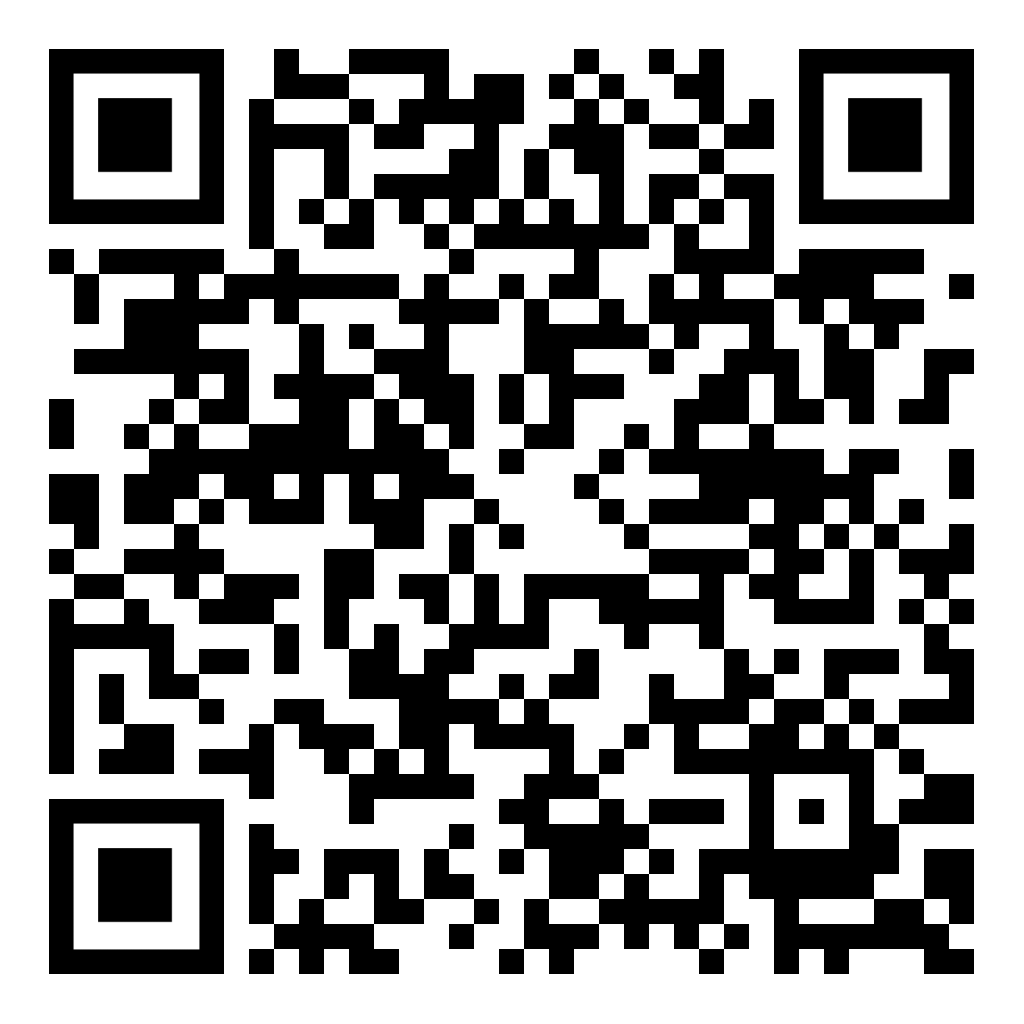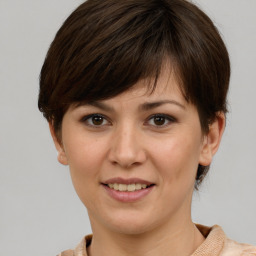Topic- Organisational behaviour
Primark is the opted firm for the report.
LEARNING OUTCOMES
LO1 – Examine the influence of politics, power and culture on the others behaviours in relation to the organisation. (Part 1)
LO2 – Analyse how to encourage and motivate the individual as well as team to attain the goals. (Part 1)
LO3 – Present the understanding of how to cooperate with others effectively. (part 2)
LO4 – use the philosophies and concept of the organisational behaviour for the given situation of business. (part 2)
PART 1 (LO1 AND LO2)
SCENARIO
Primark is the flourished business in UK which sells the quality products at affordable rates to their customers. This helps the firm to remain sustainable at this time in market when all business is victim by poor economic outlook. Further, the Primark has been divided into various sections such as accessories, hosiery, lingerie, children wear, men wear, footwear, womens wear and many others. In order to adopt new technology and to fulfil the clients demand firm has changes the strategy to align with the current trend in the market. The main aim of this assignment is to write a report which establishes the culture, technology and motivation changes on the performance and the behaviours in an organisation.
You are asked to analyse the various culture of an organisation, motivational theory and figure out the aspect that can be find in the firm. Also, examine the factors to enhance and damage the relation and productivity in an organisation.
The recommended word limit for this part is 3500 to 4500. font size is 12 and font business style is 1.5.
|
Learning Outcomes and Assessment Criteria (Assessment Part 1) |
|||
|
Learning Outcomes |
Pass |
Merit |
Distinction |
|
LO1. Examine the influence of culture, power and politics or the behaviour of others in context to organisation. |
P1. Examine how the culture, power and politics of an organisation can influence the team and individual behaviours and performance. |
M1. Evaluate the culture, politics and power of the firm to influence the individual. |
D1. Analyse the relation between the power, culture and politics also motivation which allows teams and organisation to succeed. Provide justified recommendation. |
|
LO2. Examine how to motivate the team as well as individuals to attain the goals. |
P2. Analyse the content and processes theory of motivation and the motivational technique, to enable effective achievement of objectives. |
M2. Critically examine how to influence the others behaviour by using effective concept, theories and models. |
|
PART 2 (LO3 & LO4)
SCENARIO
The CEO of the Primark has considered the theories and concept in the first part of report. Now you are required to write a report on the organisational behaviour and team dynamics for supervisors group. In your report you are asked to consider the following points:
- To investigate group and the teamwork theories in regards to the Belbin or Bruce tuck mans theory and their effectiveness.
- Examine the factors and the skills which provides the support to the team work of Primark.
- Recommend the philosophies in context to the team performance and the impact on behaviour.
- Provide the conclusion which supports the cohesive group of work in the face of public outcry in against the company.
Recommended word limit is 3500 to 4500, font style is business formal style and line spacing is 1.5.
|
Learning Outcomes and Assessment Criteria (Assessment Part 2) |
|||
|
Learning Outcomes |
Pass |
Merit |
Distinction |
|
LO3. Present the understanding of how to cooperate with others effectively. |
P3. show the learnings about what makes the team effective in opposed to the ineffective team. |
M3. Examine the group development and team relevant theories to support the development of dynamic cooperation. |
D2. examine and analyse the relevancy of the team development theory in regards to the philosophy and context which influence behaviour at the work place. |
|
LO4. Apply the philosophies & concept of organisational behaviour in the business situation. |
P4. apply the concept and philosophies in organisation for a given situation of business in context to OB. |
M4. Examine & justify the scope of concept and philosophies as how they inform and influence the behaviour in negative and positive way. |
|
INTRODUCTION
Organizational behaviour is the study and application of knowledge of human behaviour in relation to various elements of an organization. It is the study of both in individual and group performance within an organization. It examines the human behaviour in the workplace and its impact on the performance, motivation, leadership etc. It is applied to make businesses work efficiently. In this report, Primark is taken as an organization. It is a well-established business in UK. It provides variety of products which includes accessories, clothing, home ware, and health and beauty. This report covers the influence of organizational culture, politics and power on the behaviour of the individuals within the organization and application of different motivational theories and techniques to motivate the employees of the organization to improve the performance. It also includes theory for building effective team, comparison between effective team and ineffective team and implementation of organizational behaviour philosophies in the business.
LO1
P1 Influence of Organizational Culture, Power, and Politics on Behavior Within Organizational
Organizational Culture:
Organizational culture is a system which is based upon values and beliefs. In order to analyse the organizational culture, it is important to understand the Charles Handy's model of organizational culture (King and Lawley, 2016). He has defined four kinds of culture and a detailed discussion is given below.
Power Culture:
In this, power is given to few selected personnels and only they are authorized to execute power. These people enjoy the privilege of power at the workplace. The person with the power decides what is going to happen. Such people delegates responsibility to the other employees (Emerson and Welford, 2016). In such culture, employees have to strictly follow the instruction, they do not have any liberty to express or share their views. But it helps in quick decision making.
Role Culture:
Organizations in this culture is based on the rules. In this, everyone knows their roles and responsibilities (Sahrain, 2018). The power is determined by the person's position. Everyone is accountable for their work and work is delegated based on the interest and area of specialization. Having this culture makes the business bureaucratic (Nikpour, 2017). This culture is suitable for organizations having tall organizational structure. In such culture, employees willingly accept the challenge or task.
Task Culture:
Organizations in which team is formed to achieve the goals or solve critical problems follows this culture. In this culture, every member contributes equally and works in an innovative way. Task in such groups are very critical so power changes frequently as per the requirement. This culture will be effective if employees works together in harmony. In this group is of mostly four to five persons with relevant skills to solve the problem.
Person Culture:
In this culture, individual consider themselves as superior as compared to others. Such individuals are concerned about themselves rather than the organization. Employees comes to the office just for the sake of the money.
Based on the Handy's model, it can be said that Primark should adopt role based culture which will help in delegating roles and responsibility to the employee along with accountability. It provides roles based on the employee's expertise. It will positively affect the behaviour of the individual and the team as everyone will be well aware of their job role and based on which power is also given. Consequently, everyone in the organization works in harmony.
Organizational Power
It refers to the ability to exercise control and make things happen as per one's perspective by delegating the work to someone else to do it. To understand it clearly, five forms of power introduced by John French and Bertram Raven is used.
Coercive Power:
It refers to the ability of the manager to exercise force on the employees to make the work done with the threat of punishment. This power can be used for short term only. It reduces employee satisfaction and motivation level and also causes lack of work commitment (Singh and Swarup, 2020). It used in the organization with the objective to make employees come out of their comfort zone and complete the task quickly.
Legitimate power:
It is based on the belief of employees that manager has the right to give order. But such managers uses both reward and punishment a part of their leadership roles. This power is only based on the position of the manager (Heizmann and Fox, 2019). For example, in an organization manager can directly give orders to the employees to undertake a task irrespective of their willingness along with rewards for performing effectively and punishment for not completing the task.
Reward power:
It refers to the ability of the leader to provide something in return for the completion of the desired task on time. In this, the manager delegates tasks to the employees and rewards them based on their performance (Drucker, 2018). The reward can be in the form of raises, compliments,s and promotions. Providing rewards is one of the widely used methods for motivating employees.
Referent power:
In this, leader is viewed as a role model. Such leader tends to have lot of influence (Meydan and Köksal, 2019). This power majorly relies on trust and have many qualities such as in-depth knowledge, behaviour, good communication skills, presentation skills etc. For example, employees can find their role model like whom they want to become and learn from their behaviour, body language, skills etc.
Expert power:
This power relies on the in-depth knowledge and expertise. These leaders are intelligent and have power to fulfil organizational roles and responsibilities. This power is highly appreciated (Norbom and Lopez, 2016). Expert power helps in completing the challenging jobs which requires expert skills. For example, the marketing director of the company have risen to this position because of the immense knowledge he has in the field because of which he has been perceived as an expert in the field.
So, based on this, Primark should exercise referent power as it persuades employees to do things by setting an example which positively influences the individual and team behaviour. Employees feel motivated and tries to improve their performance to be at top (Morris, 2020).
Organizational politics
It refers to the self-serving behaviour used by the employees to obtain the positive outcome. It happens when employees do not believe in working hard but relies on nasty politics to secure a good position in the organization. Employees usually do this to get into the limelight and get appreciation from the top management. Organizational politics have only negative impact on the individuals and the teams (Malik and et.al., 2019). It will decrease the productivity as employees will not work properly which will result into lower output and also employees who plays politics will pay less attention to the work. Individuals may not focus on their work and may spoil others work. It creates negative environment in the workplace. It may cause conflict among the employees as other employees might feel biased. All these factors are common for individual and teams as both will face the issues.

Get an Extra 5% OFF On Your Order in Our App

Scan the QR code with your mobile to unlock an exclusive offer!
Download App Now Scan me
Scan meLO2
P2 Evaluating Motivational Theories that can Help In Achieving Organizational Goals
Content theory
It explores the factors that are present within the person and has the ability to direct the behaviour. It focusses on individual need and based on these needs identifies the area of motivation. It believes in satisfying the needs of the employee. Theories based on this ideology McClelland content theory is applied to motivate the employees. A detailed discussion is given below.
McClelland's Theory of Needs
McClelland proposed that an individual's needs are acquired over a period and are shaped and varies with the life experiences (Rybnicek, Bergner and Gutschelhofer, 2019). He has classified the needs into three parts. A detailed analysis is given below.
Needs for achievement:
In this, employee has a strong desire to achieve challenging goals and gain advancement in the job. People with high need of achievement wants to excel in their work. Such people avoid low-risk situation because it can be easily attained and success is not genuine. They prefer either to work alone or with higher achievers.
Need for affiliation:
In this need, people look for a friendly relationship and feels motivated when interacted with others (Nader, 2019). People with high need of affiliation requires harmonious relationship and wants to be accepted by others. Such people wants to work in a group that provides significant interaction. This motivates them and feels secure.
Need for power:
It refers to the power and authority that is required by the person to be influential and effective. This enhances motivation level and satisfies the need which is attached towards personal status and prestige. People with high power seeks to attain high position in an organization which gives them the authority to exercise control over employees (Lloyd, 2019). Such people are forceful, demanding and likes to engage in the conversation.
This theory can be applied to the organization, which will help in identifying the different needs of the employees so that Primark can come up with the plans to satisfy their needs.
Process theory
It is a process that motivates the employees to act in a particular way and follow the mechanism. It is concerned with the thought processes that influence the behaviour.
Expectancy theory of motivation
This theory was developed in 1964 by Victor Vroom. This theory implies that a worker will work only if there is an expectation that their work will result in desired output (Guntoro and Fongmul, 2016). Workers need to believe that they have necessary skills and capabilities to achieve the goals. This theory predicts that employees will be motivated if they believe that
- Putting in more efforts will yield better performance (Expectancy)
- Better performance will lead to organizational rewards (Instrumentality)
- These rewards are valued by the employees to satisfy their needs (Valence)
Both the content theory and process theory is beneficial for Primark as both can help in facilitating the employee's loyalty and will help in motivating employee which will increase their productivity. This helps in enabling the opportunity to develop trust and build communication among the employees (Li and et.al., 2019). Both of the theories helps in motivating the employees to achieve desired outcome. As per the Content theory, it is essential to identify the needs of the employees and they can be motivated as per their needs. There are several employees who have been harassed and bullied, therefore, it is important to provide health and occupational safety to the employees in order to meet their needs (Taylor, 2019). Employees can be motivated through monetary rewards like bonuses, increment, promotion etc. which works as an essential tool for motivating and improving the performance of the employee.

LO3
P3 Evaluation of Team Development Theory for Building Effective Team
To analyse the groups and teams, the Bruce Tuckman team development model can be used. This model was developed in 1965. It theory focusses on the situation in which a team goes through from the stage of formation to the stage of completion of project. It is made up of four stages which are discussed below.
Forming stage:
In Primark, the use of Tuckman theory will be very beneficial as team are formed. In this stage team is created and task is assigned to the team. At the initial stage, team members are highly dependent on the leader for guidance (Lin and Shih, 2018). Leader is required to be prepared to face a lot of questions such as team purpose, objectives etc.
Storming stage:
This is the second stage which is being applied in the Primark workplace in which team members will start suggesting their ideas and opinions which may arise the situation of conflict if not handle carefully as everyone wants to establish themselves (Schenk, 2019). Here, leaders make the team focus on the goal and objectives and avoid being distracted by the relationship or emotional issues.
Norming stage:
At this stage, harmony and consensus is formed in the teams and agreeing by the rules to be followed in Primark organization (Tuckman: Forming, Storming, Norming, Performing model. 2020). It is the ideal situation where trust is developed and leader takes a step back as the team members are ready to take greater responsibilities (Black, S. and et.al, 2019). The team develops their own processes and working style. All the big decisions are taken by group agreement.
Performing stage:
This is the last stage, where the team is aware and knows clearly that what is required to be done. The team is capable enough to stand on its feet with no participation from the leader. The team members look after each other and work together to achieve the common goal and objectives (Peralta and et.al., 2018). Now, team is not required to be instructed but may ask for assistance from the leader. This stages helps in maintaining the coordination among the various team members of Primark.
The effective use of this theory by Primark will help in developing effective team as all the teams will be getting proper guidance and direction. Thus, benefiting the organization in providing better performance which will help in increasing the productivity and profitability of the organization (Jovchelovitch, 2019).
Differences between effective and ineffective team-
Effective team encourage conversation on points on which they disagree and always use healthy conflicts to introduce change and creativity in ideas before reaching a consensus (Spohn, 2018). They see issues in positive light, such as unit is characterised by open discussion, effective team members make contributions and participate in every activity, with discussion being reasonable. In this group, interdependence is will used in positive way, so that aims are achieved by team that another team will not be able to achieved. Goals are modified and clarified in effective group so that the possible match between team's goal and individual is achieved, all the aims are structured cooperatively so all people are committed to achieving them. Good team perform much better than other team, they are able to makes organization succeed. Decision making process are matched with organizational situation, individual used different approaches at various times, consensus is sought for essential decisions, group discussions and involvement are encouraged by effective team. Conflicts and issues are resolved by team members through integrative negotiations as well as mediation so discussions are reached that increase join results and leave all people satisfied. They are capable for assessing own growth to achieving their goals and making necessary changes to enhance or improve team performance.
On the other hand, ineffective team is totally different from effective team, for example, they established an agreed view point speedily and defend it against original or any new idea. Ineffective team members to do work together, they cannot be able to solve issues and handle situation effectively as compare to effective team (Ruiz and Hamlin, 2018). This team are characterised by lack of agreed objectives and an environment full of tension, these tensions are sometimes held in check. Along with this, ineffective group are unable to understand what team task is or what their objectives are, on the other side, effective team are able to understood as well as accepted task objectives effectively. There is a lot of discussion in which virtually all the members participate, but in ineffective team few people tend to dominate further discussion, their contributions are way off point. Disagreements in this team are generally not dealt with appropriately by unit, they suppressed by leader, outcoming in open warfare by vote in which minority is mostly smaller than majority. While in effective team, people are comfortable with disagreement and shows no signs of having to avoid issues.
LO4
P4 Concepts and Philosophies of Organizational Behaviour
There are different concepts related to organizational behaviour which varies across organization. Some important concepts in relation to organizational behaviour are stated below.
Individual Differences in Organization:
In an organization, people differ not only on their physical attributes but also on their psychological qualities. For example: in Primark, there must be difference in its employees based on the capacity to understand, learn, predict and so on. Manager needs to have the knowledge about such differences to get the best out of every employee. Also, while assigning work manager needs to take into account such differences.
Perception of the Employees:
Perception is the way in the which person understands and interprets the things. Perception of one employee may not be same for other employees. For example, in Primark organization, there is a change in policy, some employees will understand and accept the change and some will restrain and oppose the changes on the basis that it is detrimental to the interest of the employees.
Involvement and Empowerment of Employees:
People in the workplace are different from the machines and requires to be handled carefully. For instance, an employee in the Primark should involve fully in the work for better result but it doesn't mean to employee work mechanically. Therefore, manager should empower employees which is essential for the effective performance of the employees.
The motivation of Employees:
Employees in the organization work with the only purpose to satisfy their needs and desire (Important Concepts of Organisational Behaviour. 2020). This desire is turned out to be the motivator for the employee. For example, an employee wants to buy new house for which employee is working hard to collected sufficient amount. In this case, buying a new house is a need and to satisfy that need becomes the motivators for that person.
Different Leadership Theories
There are different types of leadership theories that can be used by the organisation based on the requirement. The two widely used theories are stated below.
Contingency Theory of Leadership
This theory states that effectiveness of the leader is depended upon the situational contingencies like nature and certainty or uncertainty about the task (Nawaz and Khan, 2016). This theory is based on four factors which are stated below.
- Leaders power and influence
- Followers expectation
- Complexity of the organization
- certainty and uncertainty of the task
The Path-Goal Leadership Theory
This theory is based on the leadership style that best fits the employee and the working environment in order to achieve the organizational goals. The objective of this theory is to increase the employee motivation level so that they can help in increasing the productivity of the organization (Ledbetter, 2016). It is based on the expectation theory of motivation. It can be said as a process in which leaders selects the behaviour that is best for meeting the needs. This theory is very effective. There are four types of leader's behaviour which are discussed below.
Directive:
It refers to the situation in which leader informs the employees what is expected of them and informs them the way of performing the task. It is effective when employees are unsure about the task to be performed.
Supportive:
In this, leaders are more concerned about the employees. Leader tries to make work pleasant for it followers and also to be friendly and approachable (What is Path-Goal Theory? 2020). The aim of the leader is to satisfy the needs and preferences of the employees. This behaviour is effective when tasks and relationships are psychologically distressing.
Participative:
In this behaviour, leader consults with the followers and ask them for suggestions and opinions before taking any decision (Farhan, 2018). This behaviour is effective only when the team members are highly skilled and involved in their work.
Achievement:
It refers to a situation where leader sets challenging goals for the employees and expects them to perform their best and showcase their ability to meet the expectation. It is effective in sales and technical job work environment.
Based on the above discussion, the leadership style that can best suit the Primark organization, based on the path goal theory is the situational leadership style. To understand the team performance, the use of this leadership style will be very effective in identifying the complexity and maturity of the group. The situational leadership theory is based on the four leadership styles which are stated below.
Telling: In the leader communicates the employees about what is to be done based on the roles and objectives created for each employee.
Selling: In this, leader persuades the followers to share their opinion and suggestions.
Participating: Under this, leaders leaves the decision on the employees and may participate in the decision making process but the final decision is left on the employees.
Delegating: Leaders delegates the roles and responsibilities to its followers and provides minimum help or guidance to their followers but leaders may be asked for help with respect to decision making process.
This leadership style will help leaders in understanding the complexity that is present within the teams in relation to achievement of the goals. The situational leadership style is the combination or set of different leadership style which can be useful in analysing the team working. This form of leadership style is very flexible, helps in successful engagement and collaboration among the team members. It assesses the maturity level of the employees, provides guidance and direction to the employees which results in increase in level of productivity and exercise control over the possible outcomes. By using this theory, there will be better ways to resolve the issues that are present in the team as compared to the contingency theory.
CONCLUSION
In the light of the above study, it can be concluded that organizational strategy has a significant impact on the culture which affect organizational behavior. The impact that organizational culture, power and politics have on the behaviour of an organization directly affect the performance and productivity of Primark. For that different model such as Charles Handy model of culture, John French and Bertram Raven model is used which has helped Primark to get detailed understanding. The different motivational theories and techniques that have been used to motivate the employees of the organization and its benefits like McClelland theory and expectation theory. The complete analysis of Tuckman theory is carried out to understand the group development process and its benefits to the organization in building an effective team. A comparative analysis of the effective team and ineffective team is carried to highlight the importance of forming an effective team. Also, different organizational behaviour and philosophies has been used such as path goal theory and contingency theory to identify the leadership style that will be best suited for the organization, Primark. Thus, the proper management of organizational behaviour is essential for the smooth functioning of the organization.
ScoreTop Grades in Academics by Placing an Assignment Order
Concerned that you won't finish your assignment in time? Do not worry! Our writing service provides prompt, high-quality support. If you are looking for assignment help UK, you can contact Assignmentdesk.co.uk. We provide outstanding quality assignments at pocket-friendly prices to the students. We have a team of professional writers who can assist you with the assignment writing task and help you to score high grades. Our experts are also skilled in providing essay writing service UK, and they have vast knowledge in dealing with students writing problems. Our main motive is to relieve students' academic worries and help them get high grades in the semester. Contact us today and get the best writing services like dissertation help, custom writing help and much more.



 Company
Company


















